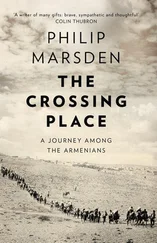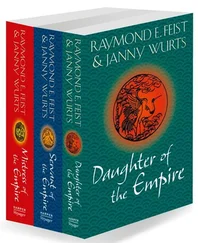In the hurried days before departure I decided to buy my own saddle. Mongolians ride on wooden saddles, and I felt that was probably a technique that you needed to start young to have any hope of surviving. I decided on a Western saddle, with a reassuring pommel to hang onto should the horses prove frisky. In Herefordshire in a splendid equestrian supplier’s I spent a happy afternoon choosing my rig. In the horsey atmosphere of the place I got rather carried away and bought a confusing array of ropes, a halter, a grooming brush, a splendid hoof pick, a felt pad, saddle-bags, a pair of spurs, a hip flask, stirrup leathers, a pair of chaps, and a curious tool rather like a cheese knife whose purpose I never discovered. My pleasure was spoiled only by the scepticism of the young assistant who was obviously struggling to square the challenge of my proposed expedition with the naiveté of my questions.
On the way back to London I stopped at Hereford Cathedral to see the Mappa Mundi. The map hangs in a modern suite of exhibition rooms whose subdued light, after the bright slabs of sun in the cloisters, felt like the dim uncertainties of the past. It dates from the late thirteenth century when the Mongol Empire was at its height.
Over the centuries most of the original surface pigment has flaked away – the bright green seas, the blue rivers – leaving only its weathered base, the colour of old leather. In the religious hush of this place, it felt like a ritual artefact, a piece of ancient hide covered with symbols and obscure passages of text, a geography of spells and wonders.
In thirteenth-century Europe geographical knowledge had sunk to its lowest ebb, and the Mappa Mundi is not so much cartography as storytelling, a compendium of all the tales and marvels gathered from the Bible, from classical authors and from medieval myths, deployed across the continents. The alarums of Matthew Paris, penned just over forty years before, found their unreliable echo here in the frights of Asia. While Europe is full of reassuring cities represented as small line drawings of castles and spires, the rest of the world is portrayed as a landscape of fabulous characters. It was a rattle-bag of tall tales and obsessions, of hopes and fears about the dark beyond one’s own borders.
In Africa there are unicorns and men who ride crocodiles like horses. In the exhilarating provinces of the Upper Nile are the Blemyes whose heads were in the middle of their chests. Beyond are the Satyrs, the Hermaphrodites, the Troglodytes, and a splendid race with protruding lower lips which they deploy like umbrellas to shield themselves from the fierce equatorial sun.
With east at the top, according to the convention of the time, Asia occupies the upper half of the map. India was packed with legendary birds like the Alerion and alligators lurking on the banks of the Hydaspes. Dragons swarm across the island of Ceylon while dog-headed men patrol the regions east of the Carpathians.
My journey to Mongolia lay past the eastern end of the Black Sea where Jason’s Golden Fleece was pegged out like a drying hide. To the north lay Scythia, the barbarian hinterland of the ancient Greeks, where two rather belligerent looking fellows could be seen threatening one another with knives. To the west are the Grifones, part of the nomadic traditions of these regions. They were said to use the bodies of their enemies as horse-trappings; a human skin can be seen thrown over a stallion as a saddle. Beyond the Oxus lies Samarkand, a rare city in these parts, looking like an Elizabethan sketch for the Globe Theatre. On the far bank of the Jaxartes are the Essedenes respectfully devouring their deceased parents, a practice they believed preferable to leaving them for the worms to eat. On a blunt peninsula enclosed by a turreted wall, a long and rather garbled account in dog Latin identifies it as the place where Alexander imprisoned the sons of Cain, a fearsome tribe who will break out at the time of the Antichrist. Not far away, on the island of Terraconta, was the race descended from Gog and Magog, ‘a monstrous brood’, the enemies of God, who would one day invade his kingdom.
I stood on tiptoes to examine my destination on the outer edges of Asia. In the top left corner of the map, at the furthest extremities of the known world, where Mongolia should be, between the borders of China and the dark Outer Ocean, the parchment grew darker and the figures fainter in zones that seemed to fade into twilight. A sketch showed men with horses’ hooves: the land of the Hippopodes.
Since the days of ancient Greece it has been the conceit of settled people confronted with the horsemen of the steppes that their extraordinary equestrian prowess was not quite human, that the riders were in fact part horse. If any rumour of the Mongols had reached the map-makers perhaps it was here with a race so fleet, so unruly and reckless, that they pranced like horses.
That was my destination, pale markings at the far end of Asia, on an atlas of the imagination.
Chapter One OUR LADY OF THE MONGOLS
On the evening flight to Istanbul the plane bucked in rogue winds. Dark clouds piled up from the east. Tipping beneath the wings, Asia looked black and thunderous.
By the time I got into the city it was past midnight. Istanbul seemed deserted. In the dark I was struck by how European the steep lanes of Sultan Ahmet looked – the tall narrow houses, the fanlights above the doors, the wrought-iron balconies, the curtained windows. I crossed the empty gardens of the old Augustaeum where the two great rivals of Istanbul, the Sultan Ahmet Mosque and Haghia Sophia, the victor and the vanquished, face one another across the rose beds. Sultan Ahmet was all grace and delicacy, an architectural dancer poised on the balls of its feet. Birds swam around the minarets in tall currents of light. At the other end of the square Haghia Sophia, once the greatest church in Christendom, sulked in the embrace of old plane trees.
I found the hotel in the tangle of cobbled streets falling towards the walls of Byzantium and the Sea of Marmara. I woke the bekçi , asleep on a bench in the lobby, by knocking on the window. A tall lugubrious fellow, he led me silently upstairs, showed me the room with a slow melodramatic sweep of his arm, then drew the door carefully behind him as if he was closing the lid of some precious box.
The first night is always the strangest. I went to the window and looked down on the Turkish streets. Among the litter opposite, a cat was marking its territory. Raising my gaze, above the rooftops, I could see ships lying at anchor where the Sea of Marmara narrows to the mouth of the Bosphorus. I wondered if any of them were Russian; I hoped to find a Russian freighter to take me on the first leg of the journey, across the Black Sea to the Crimea. But my mind was still full of London. I slept fitfully in the narrow bed and dreamt of packing in the familiar rooms of my own house. I woke once with the sudden idea that I needed to remember to put in carrots for the horses. Beyond the ghostly window the muezzins were calling.
I had breakfast on a roof terrace overlooking the sad florid walls of Haghia Sophia. Suddenly London was gone, and the world had a different focus. In the room I spread maps on the bed and telephoned the shipping agents to get the names of boats due to depart in the next week for Sevastopol.
In spite of the fact that Istanbul has been a Muslim city for the past five centuries, Europeans still have a proprietorial feeling about the place. For almost 2000 years it was one of us. Byzantium was a Greek city, and Constantinople, its successor, was the new Rome. In its archaeological museum the splendid Alexander sarcophagus and a relief sculpture of Euripides are the star turns in rooms packed with classical antiquities. It is the only city in the world to bestride two continents, but for a long time its heart was in Europe. Then, when we were busy elsewhere, it slipped out of the European orbit and became Istanbul, a Turkish city ruling an Asian empire, capital to both the Ottoman Sultanate and the Islamic Caliphate. To the European visitor, modern Istanbul can seem like a wayward uncle who wandered off to Araby and returned years later with a beard, a pair of satin trousers, a water-pipe habit, and a young wife dressed in a black sheet.
Читать дальше












